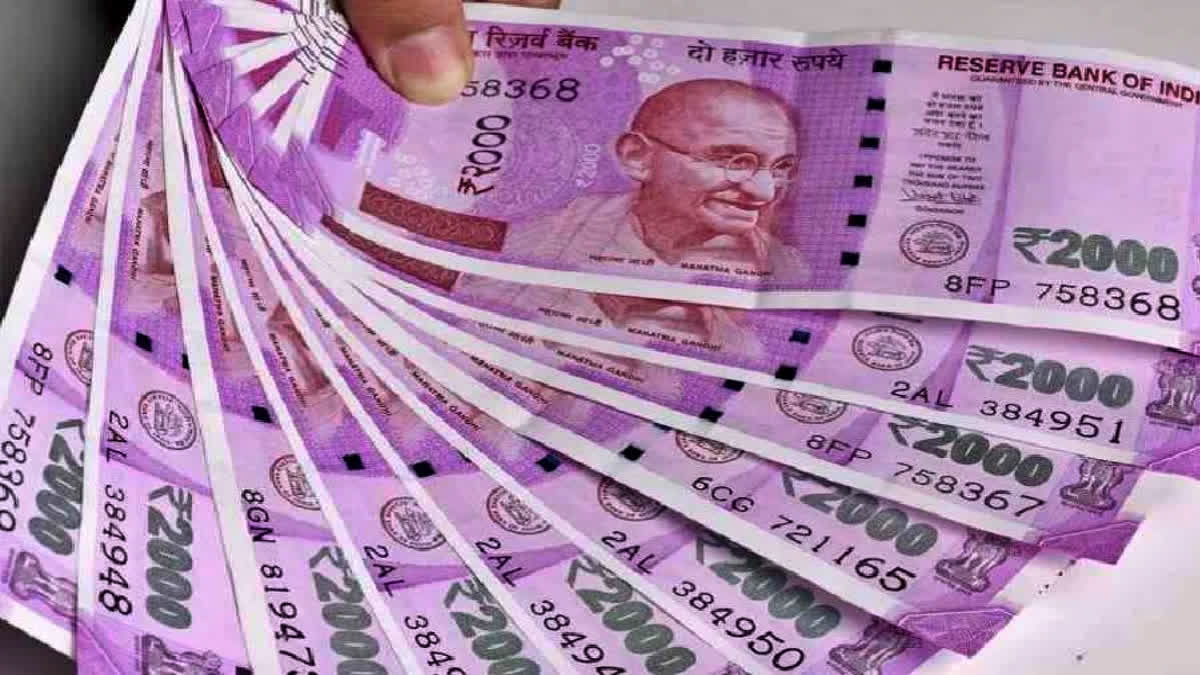Delhi: In a surprise decision, the Reserve Bank of India, decided to withdraw Rs 2,000 notes from circulation and asked the public to deposit them over a period of four months. The decision that was announced by the Bank on Friday evening to avoid any adverse impact on the stock markets, nonetheless surprised many people and opposition party Congress was quick to target Prime Minister Narendra Modi for the decision as the earlier demonetization or note ban was announced by the Prime Minister in November 2016.
Under the Reserve Bank of India Act of 1934, the RBI was established to regulate the issue of Bank notes and the keeping of reserves in the country. The aim of the RBI Act was to secure monetary stability in India and to operate the currency and credit system of the country for its benefit.
Section 22 of the RBI Act authorises the Bank to be the sole authority in the country to issue bank notes. The RBI also decides the denominations of the bank notes to be issued and to withdraw any denomination of currency notes from circulation.
Why did the RBI withdraw Rs 2,000 notes from circulation?
According to RBI, the Rs 2000 denomination banknote was introduced in November 2016 primarily to meet the currency requirement of the economy in an expeditious manner after withdrawal of the legal tender status of all Rs 500 and Rs 1000 banknotes in circulation at that time.
According to the Bank, since that objective has been achieved and currency notes of other denominations are available in sufficient quantities hence it has decided to withdraw Rs 2,000 notes from circulation. The RBI has already stopped printing of Rs 2000 bank notes from 2018-19.
Rs 2,000 notes reached end of lifecycle
According to the RBI, a majority of the Rs 2000 denomination notes were issued before March 2017 and they have reached at the end of their estimated life-span of 4-5 years so this was the right time to withdraw it. Moreover, according to the Bank, the Rs 2,000 notes were not commonly used for transactions therefore a withdrawal will not affect the general public.
RBI’s Clean Note Policy
The Reserve Bank has adopted it as a policy to ensure availability of good quality banknotes to the members of public and Rs 2,000 bank notes in circulation were becoming obsolete.
Legal tender status of Rs 2,000 bank notes
Yes. The Rs 2,000 banknotes will continue to maintain its legal tender status.
Can you use Rs 2,000 banknotes for normal transactions?
Yes. People can continue to use Rs 2000 banknotes for their transactions and also receive them in payment. But the Bank encourages people to deposit them or exchange them on or before September 30, 2023.
What you should do with Rs 2,000 banknotes?
If you have Rs 2,000 bank notes then you can approach any bank after May 23 to exchange them and get currency in other denominations such as Rs 5,00 or Rs 2,00 and this facility will remain open till September 30. The facility for exchange will be available also at the 19 Regional Offices (ROs) of RBI having Issue Departments by the end of September this year.
Is there a limit on deposit of Rs 2000 banknotes?
According to the RBI, there is no restriction to deposit Rs 2,000 bank notes subject to compliance with extant Know Your Customer (KYC) norms and other applicable rules and regulations. However, people can only exchange or deposit Rs 2,000 bank notes upto a limit of Rs 20,000 at a time.


